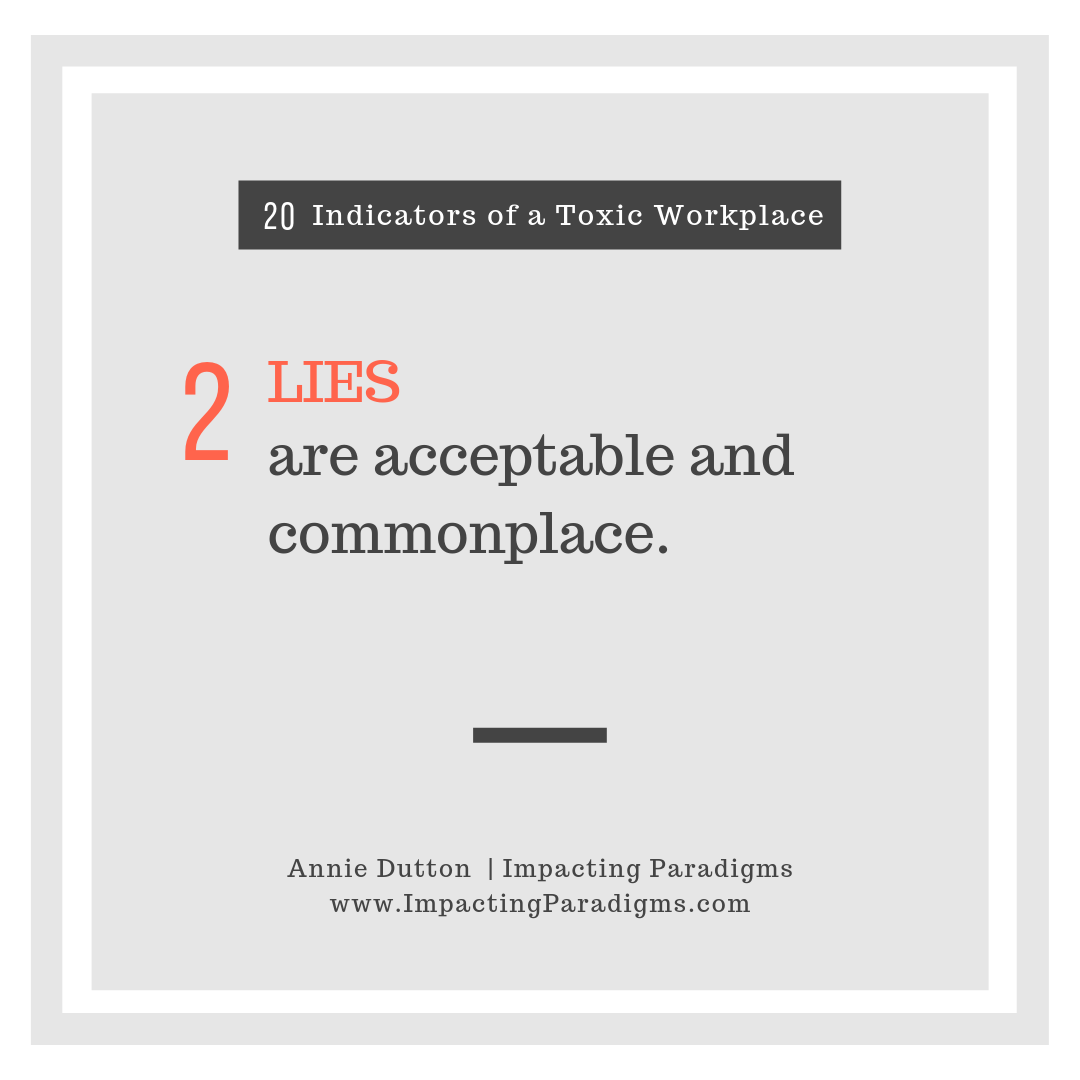Secure cultures accept that mistakes will happen & encourage sharing the lessons learned. A symptom of a toxic culture may be one where decisions are often passed along or continually delayed. There may also be a lot of finger pointing and confusion. Successes are claimed - maybe by many. Mistakes and failures are blamed on others. Those who do own their mistakes, may be “punished” with poor annual reviews, blocked assignments, or by being made a scapegoat.
20 Indicators of a Toxic Workplace
20 Indicators of a Toxic Workplace
This one is simple: Tearing others down is always a symptom of unhealthy behavior.
20 Indicators of a Toxic Workplace
Sometimes the demands placed on employees do not recognize boundaries. Employees feel that they will be penalized if they enforce their boundaries, family commitments (outside normal work hours), or ethical constraints. A symptom of this can include frequently receiving last minute requests at the end of a day.
20 Indicators of a Toxic Workplace
Thinking through downstream responses to a decision made or a direction taken can increase quality and often involves collaboration. The motive behind discovering all the angles is what can indicate the presence of a toxic environment:
Is the focus on delivering the best product or service?
Or, is the level of distrust so high that the focus is about determining ways to placate, bypass or distract others?
20 Indicators of a Toxic Workplace
We live in a culture where progress at work often comes in the form of a “better job grade” or “title”. We get a sense of power and importance from these. Sometimes we “lord” it over those “below” us. A new title or job grade can be an indicator of growth – a stepping stone. However, too often subjective and arbitrary decision making is applied to giving these in inconsistent ways, which results in people being de-valued when they are “looked over”. We limit how many people can be assigned a particular job grade / title. Yet, we still tell everyone to “be a leader”. We just refuse to formally acknowledge that they are valued as a leader. And, sometimes create cultures where some “job grades” don’t associate or respond to “other job grades”. How is an employee supposed to reconcile this contradictory message?
20 Indicators of a Toxic Workplace
It sounds odd to identify lying as something that is common at some places of work. Withholding information, directing others down incorrect paths, “fudging” numbers / information, and playing multiple sides of a situation are all ways deception can happen at work. These actions erode trust. They also decrease service / product quality, which results in lower revenues.
20 Indicators of a Toxic Workplace
Micromanagement is an effective method when partnered with the appropriate activity. As a leadership style, it stifles creativity, erodes trust, and increases anxiety / fear. This can create a cycle because it can be used as a response to fear.
Conveying sensitive messages
When conveying sensitive messages, taking the time beforehand to acknowledge our own mixed feelings, disappointments, anger, and the root reasons for them can help ensure that when we do deliver these types of messages that our intent and our non-verbal signals are originating from integrity and sincerity.
Too often in my own past, I have not done this and realized later that my anger or irritation was not directed toward the person I was communicating with. In times, when I have taken the time to reflect, offenses toward others have been resolved - message delivery was more effective .
And, those unintended nuances were avoided.
Nuance
Nuance is defined as “a subtle difference in or shade of meaning, expression, or sound”. In terms of communication, this can be: body language, tone, double meanings, facial expressions, information deliberately excluded, eye contact (or lack thereof), or implications left to be interpreted by the receiver.
Congruency between our words and body language, tone, eye contact, and facial expressions will enforce the message. If there is a discrepancy between our words and these non-verbal signals, the receiver of our message may miss our message and our intent.









